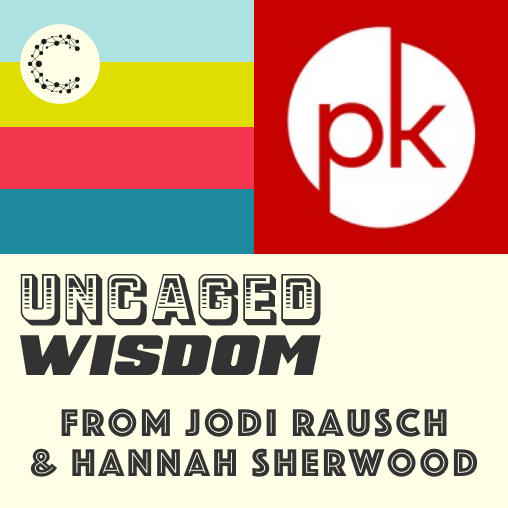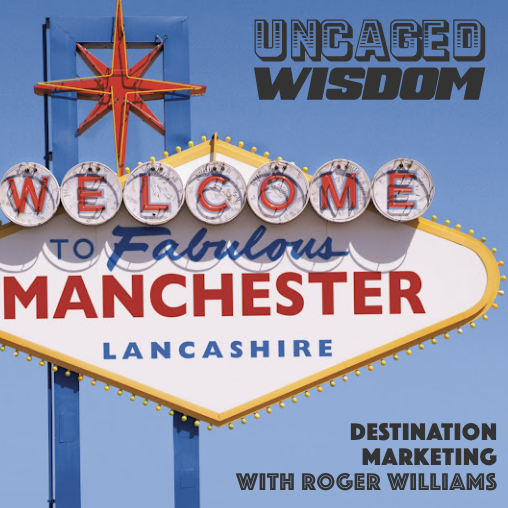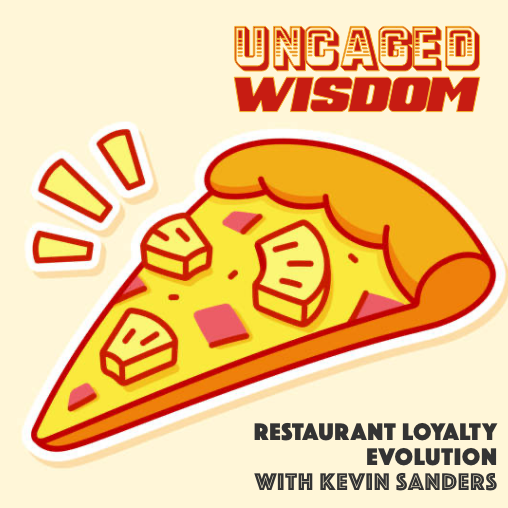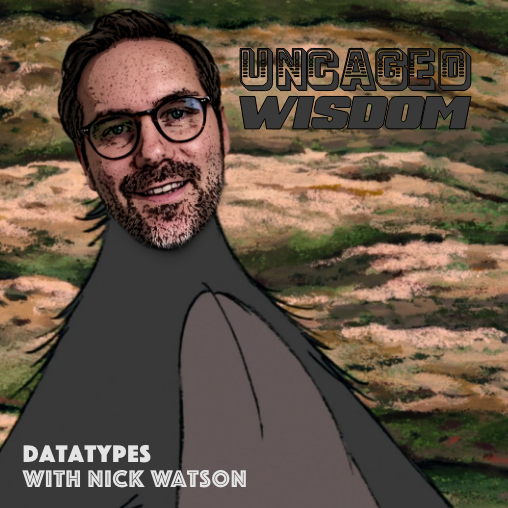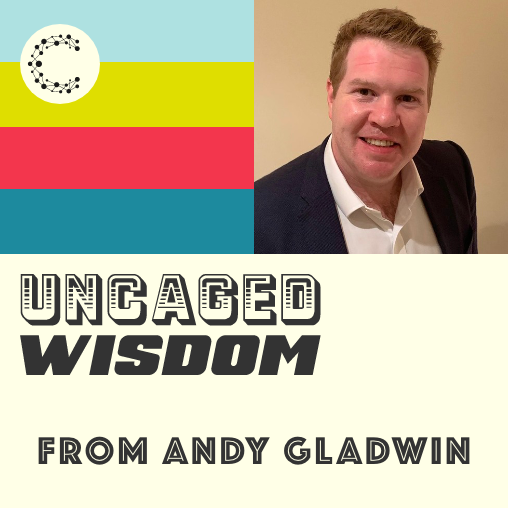Developing A Human-Centric Approach To Loyalty w/ Jodi Rausch & Hannah Sherwood
- 0.5
- 1
- 1.25
- 1.5
- 1.75
- 2
Hannah Sherwood: Strategy and design is a very successful pairing.
Speaker 2: Uncaged Wisdom, Cheetah Digital's podcast for modern marketing.
Julian: Hannah and Jody, thank you very much for joining us today on this special Cheetah Digital, PK crossover spectacular on loyalty and human centric loyalty, which we're going to get to in a minute. But before we start, could you just introduce yourself to our audience?
Jodi Rausch: Thanks Julian, so excited to be here today. Jody Rausch, the senior practice director of the Integrated Loyalty Solutions team at PK. Which basically means that I work with our teams to make sure that we are kind of implementing all of our thought leadership across our client work. Helping work on business development efforts, and continuing to push forward our loyalty thinking as part of this team. Making sure that we're absorbing and consuming the latest trends, and reflecting that not only in our own POV, but in the work that we do for our clients.
Julian: And Hannah.
Hannah Sherwood: Sure, thanks Julian. My name is Hannah Sherwood. I am an associate director of design on the PK team. Our design team at PK covers a whole gamut of design related activities. My work in particular is focused on the intersection of design and loyalties. So how do we create a really, really great user experiences that help enhance the great loyalty programs that we're designing with our clients.
Julian: Hannah, who is your favorite Buffy character and why?
Hannah Sherwood: Love this question. So my favorite Buffy character has got to be Anya, just because she tells it like it is. She comes in season three, and she just kind of throws a wrench in the whole Scooby gang, and is just blunt and wonderful.
Speaker 5: I know. You can laugh, but I have witnessed a millennium of treachery and oppression from the males of the species, and I have nothing but contempt for the whole libidinous lot of them. Then why are you talking to me? I don't have a date for the prom.
Julian: Jody, you can also share with us your favorite Buffy character. Or if you'd prefer another character from any other series that just springs to your mind, now that we've gone down the popular culture cannon.
Jodi Rausch: I'm a little embarrassed to say in front of the two of you that I have not seen a lot of Buffy. I know who she is, and I think I've maybe seen an episode or two, but the closest I can come is the fact that Hannah mentioned the Scooby gang and I immediately went to Velma and Scooby. That answer even ties in with Hannah's because Velma kind of told it like it was, and she kind of cracked the whip and kept everyone in shape. So maybe we're actually picking similar characters, just in radically different decades.
Speaker 6: The first documented case of the curse of Crystal Cove is from 1630, when a garrison of Spanish conquistadors mysteriously vanished from the harbor. Oh, that is so scary. Where did they go? What part of the word mystery didn't you understand?
Julian: Another quick one I'm just going to throw at you Jody to start is, do you remember a loyalty program and that caught your imagination early doors. And inaudible you were maybe a part of, or you just joined, but was there some sort of loyalty, light bulb there, like" That's pretty cool."
Jodi Rausch: That's a really great question. When I was growing up, my family moved around a lot. We had family all over the country and I had the distinct pleasure of getting to know air travel early in my days. And as I was growing up in Atlanta, clearly it was Delta. So I was probably most aware of Delta just as a consumer from an early age. But I think more from a professional standpoint, I had the opportunity to intern at one of the field offices of what at the time was Holiday Inn Worldwide. Which is now IHG Intercontinental Hotels. And I worked in their field marketing office in D. C. while I was in college. And everything from getting the various hotels to agree to participate because it's a franchise organization, to helping with other marketing initiatives that were more regionally focused. We had the opportunity after school to actually go and work for IHG, what is now IHG. And that is where I really started falling in love with loyalty. And the understanding of that, this is more than just a marketing program. There is so much psychology behind it, it really is human behavioral studies of how do you get a consumer, a traveler, to choose your hotel brand versus another hotel brand. It's more than just choice, and it's more than just what are your rooms look like. It's that experience, and that has kind of led me in many ways throughout my career.
Hannah Sherwood: Nordstrom. I think the loyalty program itself, obviously, but I'm a native Seattle resident and if we want to talk about emotional loyalty, I could talk to you about Nordstrom all day. They were the only place that I could buy shoes in high school, cause I have giant feet. And they were the only retailer at the time that carried my size. And then they're actually the... After I graduated from college, and I got my first job, I signed up for their credit card, and their loyalty program. And it was, it felt like kind of the very first like adult decision that I made. And I've been a long time Nordstrom customer, and kind of loyalty aficionado with them since.
Julian: Jody, I guess we've covered a little bit already, just in naturally talking about a couple of good examples in the loyalty space. But I was wondering if you could kick us off just with your own interpretation of a human centric approach to loyalty. They're all words we're familiar with, and it makes sense as a concept. But what does that actually mean from your perspective when you're talking to your clients and your colleagues?
Jodi Rausch: That's another great question. I think one of the things that we talk about a lot internally is how loyalty has really shifted and transformed over the last couple decades. And so when we think about where we were about 10, 15 years ago, it was, the brands were really dictating how a customer or a member was going to engage with the brand. How they were going to be rewarded, how we were going to use their data, how we were going to communicate with them. And through new technology, a shifting landscape in privacy laws, new technology that comes onto the stage. There are new priorities and there's a shift in how loyalty is being not only perceived, but now how it's being delivered. And a lot of that is being driven primarily from the member's perspective. So today members are dictating, and brands are having to react to. Members are saying," This is how I want you to use my data. This is the data that I want you to have. This is how I want to engage with you. This is how I want to consume information from you, whether it be by channel or the types of information." They're also really having the opportunity to say how they want to be rewarded, and what they want their experience with the brand to be. So when we think about human- centered design, that's really the core of it all. Is that if the member and the consumer are dictating how they want to engage with us, when we develop our loyalty programs, our loyalty strategies, we have to start with them at the core. And we can't start with ourselves the brand at the core, because then we're going to miss the entire point of what we're building. So by starting with the member at the center of everything and understanding who they are, and what they want, and what their aspirations are. And I'm sure Hannah will get into all sorts of good stuff on this.
Hannah Sherwood: Definitely. I agree with everything that Jody said. I would add that human- centered design is a key part of all of the design work that we do at PK, loyalty and otherwise. And loyalty is such as Jody said, kind of the way that it's shifted over the last couple of decades and to how it exists today. There's such a natural marriage between true human- centered loyalty and the human- centered design that we practice at PK. And I will say that I was new to loyalty when I came to PK many, many years ago now. But it felt like such a natural extension of the work that I had been doing before kind of joining the team and getting involved in the practice here. Because as Jody said, it's really about understanding who our customers are, what they want, what makes them tick, how they want to interact with the brand. And not even really the brand, right, but how they want to interact with their life, and their friends, and all of that. And then how can we as brands kind of support that, just that desire to kind of live life and engage with the world around them. And so once we kind of put that at the center of the work that we do, I think it almost makes it easy to design experiences that are going to really excite our customers.
Jodi Rausch: Hannah is spot on with how it makes it easier, and it doesn't just make it easier from our perspective. And that's primarily because we don't design in a bubble. We don't meet the clients and then go off and design something, and come back and unveil it with a big ta- da. There it is. We do a lot of work with our clients, collaborative workshops, participatory design workshops, that Hannah is a whiz at running. But when you can kind of position it in the way of how she's talking about how they're engaging and thinking about it from the member perspective, you're really opening up a whole new lens for a lot of our clients who haven't necessarily thought of it in that way before. We start with, and again, I feel like I'm stealing a lot of Hannah's thunder here, but Hannah asks a lot of how might we questions. And the way that you formulate a how might we question is really challenging our clients to think differently about the questions that they've been asking themselves, but they're looking at it from a brand perspective. And instead she's challenging them to think of it as if you are a member, how might we do something better? How might we deliver something differently? How might we really change how they have a relationship with us, the brand? And that I think is the starting step of really transforming their approach to loyalty, and how we design, and deliver ultimately the best customer and member experience that we can.
Julian: Staying on this topic, and actually I'm quite interested with the workshop exercises, because we're all guilty in our own lives and certainly brands are that you get caught in your own bubble of perspective and thought. How do you shape them out to think about the member's perspective? I just wondered if there's a saying that gets them to suddenly wake up and realize that. And also linked to it, how many sort of members do they think about? Cause I'm sure they feel like they're a very broad church, but actually if you're thinking about trying to make a human experience, you all got to do that for each type of member. Or accept that actually the people who really connect with you at the deepest level are properly, are quite a specific type.
Hannah Sherwood: Yeah. I think those are both really fantastic questions. So to tackle the first one first, how do we get our clients to think about their customers first to kind of put themselves in the customer's mindset, in the customer's shoe? We do have a lot of techniques that we use for doing that, Jody mentioned workshops. We like to engage our clients in the design process, and we find that that leads to more successful outcomes. And it's both about understanding their needs from a business standpoint, but also helping them just understand the customer better. And I think we find for the most part that our clients do understand their customers pretty well. We'll often do additional customer research that we'll bring into workshops. And then as Jody said, it's really about asking the right questions. One thing I personally love to do in workshops is just ask really weird out there questions that kind of put people a little bit, kind of make them sit up a little bit straighter and think like," Oh, it's not really something I've ever thought about before." The question itself is the point, right? It's about putting them in a different mindset. It's about helping them kind of get out of their own day to day life, and really understand the customer. And then oftentimes we'll find that if we kind of follow it up with maybe some more boring questions, we still get these really, really, really great answers that are super customer focused. The other question around kind of customers, I mean, Jody, would love to hear your thoughts on this as well. But one of the things that we sometimes find challenging is that some of our clients want to design for everybody, and that's really tough. And, so one of the other things that we try to do early on in projects is help them define the audience. And that can look different depending on kind of where the client is in this process. So how much they already know about their audiences, how much of a defined customer base they have. But it's really about who is the main group of people that you want this program to appeal to, and be designed for so that we can really hone in on that group. Not to the exclusion of other people, right, but if you're designing for everybody, you're really designing for nobody. And we want to really design the right program for the right audience.
Jodi Rausch: A lot of it is pending how and where the client is in their journey, and how much data they have. We've worked with clients who have very robust personas for a few key customer segments that are their core segments that they need to really mostly be designing for. And I think a lot of times we ask them to kind of take on the mantle of certain personas as they are answering some of their questions or participating in these workshops, et cetera. So that, I'm thinking about Sally, who has two kids, she lives in town, her husband commutes to work, she works from home. What are their personas? What are the different ways that they approach life, and the things that they are dealing with in their everyday life. So that when you're answering questions, hopefully you're keeping in mind, well, her answer may be different because she has two kids versus one of the other personas which is someone maybe who's fresh out of college and they haven't gotten to that stage of their life yet. So, trying to make sure that we are incorporating personas and segments as much as they are available to us I think really makes the work more impactful. For those clients who haven't gotten there, I think we tried to help them get to a certain point where we can come up with at least a few personas that may not be the result of months and months of massive work. But that are clearly part of their demographic sets that are core to who their foundational customers are. So that we're still kind of incorporating a lot of those ideas, and the same concepts of being focused and who you're designing for. So that, to Hannah's point, I think spot on. If you're designing for everyone, you're designing for no one, and it doesn't feel, it doesn't have that air of personalized. It doesn't feel bespoke to me, and it no longer feels like the brand knows me, and I want to know them more. So it just feels like, yup, yep, I'm here. I'm a frequent user, here's my key fob card, because that's the only way you know me.
Julian: In a world full of data, and certainly when we're talking about member IDs, and member records, and even people that are potential customers that brands want to turn into loyalty members. Would it be a fair assumption that for the most part, you see a lot of brands with a lot of information. It's just, the challenge is them trying to actually really focus in the right places, at the right time to get the right data sets from it. I just wondered about that, because you deal with these all the time, and it used to be about understanding people. And now, actually, it's making sense of a mass of information.
Jodi Rausch: For sure. I think most retailers have a lot of information about their customers, many brands do. Not all are, depending on the brand and whether they're data C, or they're CPG. But there are a number of brands out there who don't really have the ability at this time to capture customer data. So they're kind of flying blind, and they're really relying on other parties, other industry experts to tell them who their customers are and how they behave, et cetera. For retailers especially, you have all the POS information. If you have a loyalty program, you have that information. You have some information coming in from credit cards, and people who have established online accounts. There is a lot of data out there, I think one of the challenges as you mentioned, Julian, is making sure that they are using it appropriately. Because one thing that we are definitely hearing from members and consumers in general, more and more is that if I'm going to give you all of my data and certain parts of my data, I expect you to use it. So if I am telling you who I am when I am shopping, and I still am not getting a personalized experience, it feels like a disconnect. We have a number of clients who are really starting to embrace first- party data, zero- party data, and we're trying to capture customer interests. What are the things that motivate them? And whether it's through polls or through their personal profile, it's progressive profiling. And the more you can do that, certainly the more you know about your customer. But then the key is how do you use it? If I'm asking you what your interests are, or I'm asking you what type of products you like to shop for with my brand. Please don't send me then massive communications about things that I've clearly told you I'm not interested in. Because then it feels like I've given you this data, and you're not using it responsibly.
Hannah Sherwood: I think it's also about connecting data across different sources, and different channels. So one of the things that we talk a lot about at PK, but in particular with loyalty is service design. And what is the total experience of your customer as they interact with the program that might be on my phone through an app, through a website, in the store, in a mall. And we want to have that be a really seamless experience where the customer is known at each point along that journey, and they have an experience delivered to them that is personal. And I think that oftentimes one of the challenges we run into is connecting data across sort of disparate channels. But also knowing kind of which data to use at which points. And so, as you said, Julian, I think, certainly have clients still for whom the issue is getting data. But I think more and more, it's really about making use of the information that they already have and crafting that into a, just really, really great customer experience.
Julian: With retail in mind again, what are some of the most important things that you try to communicate either in the workshop, or after when planning a program for where they need to be appearing? And what they need to be presenting to their members for, to be useful, to provide a value exchange, to get them to want to make that next spend with them?
Hannah Sherwood: Yeah. So there is some common touchpoints, that I think especially if we narrow in on retail, there's things that we know are going to be true, regardless honestly, of who we're talking to. Because it is what customers expect today in this day and age when they interact with any brands. And so we kind of start with that common core, that common framework, and then we really want to understand the client's unique business needs. And that is done through when, and Jody can elaborate here, through those, some of those workshops that we mentioned earlier through one- on- one conversations with stakeholders. Sometimes we'll do store research, where we go into a store and we'll obviously do kind of our own online research. And so it's basically about understanding the things that make a particular brand unique, and then layering that on top of these existing frameworks. So that we can lean into what makes a brand special. That's going to make them stand out in a customer's mind. And how do we really lean into those particular moments as a way of lightening up the whole experience for the customer?
Jodi Rausch: I think it goes back to how Hannah was asking even the prior question about data. Is connecting the different channels and the different customer touchpoints with data is really kind of how they expect to engage with you in general as a brand. So when you think about the different touchpoints, how do you decide where to promote loyalty? How do you decide where to promote the value of loyalty, and the value exchange that they are getting for the information that they're providing? It really is, and it sounds like a horrendous cliche, but I'm going to use the word anyways. It is an omni- channel experience. So there shouldn't be, your engagement with a member shouldn't just be on email. They should feel it, their entire brand experience should be wrapped in that loyalty strategy. So that whether I am on my app, I am on my desktop, or laptop at home, and I'm going through the web, or if I'm walking into a store, I should feel that loyalty is the experience for this brand. But it's really important that we are continuing to engage with them throughout the process, and in all of their touchpoints, regardless of where they are interacting with us, how they're interacting with us. Because loyalty is the lens through which now they see the brand, or it should be.
Julian: Final bit we're going to come and see how a connected membership model brings to life brand value between transactions.
Jodi Rausch: I think we have touched on that a little bit. I think the challenge that a lot of brands are facing, and that we try to especially bring to the forefront. And I think this is in particular, say with retail, is whether it is a frequent purchase. So say a grocery, or going to the drug store, those are frequent purchases. And some purchases are a little bit more spread out. I may not go to buy new clothes every week, but you know, maybe it's monthly, maybe it's every other month. The challenge that I think a lot of retailers have and some are doing very well, is using this omni- channel experience and using customer data to really engage customers in- between those shopping visits. Because otherwise you're not top of mind for me. I think about you when I need my, I need new toothpaste, or I think of you when I'm out of milk, but I'm not necessarily thinking about you other than those times. Where I am able to bring a whole new layer of value to members outside of rewards, outside of experiences when I'm in the store. This is where you have the opportunity to really, not only differentiate yourself from other retailers in the market, but you have a chance, and we haven't spoken about this yet, to shift from, I have transactional loyalty with you, to I have emotional loyalty with you. The more you are making my life easy, you're helping me plan meals in advance, or you're making me think about how, you know what, kids are about to head back to school. I need to start thinking about that. And the more that I can provide content, or guides, or checklists, things like that that make customers want to come to me, members want to come to me to get that information. I am a trusted source, I'm a trusted advisor for that customer, that member, the more that I have that emotional loyalty from them. And that is only one aspect of emotional loyalty, but the ability to provide them that additional information and that additional value to make their lives easier is huge.
Hannah Sherwood: I again, agree with 100% of what Jody just said. I think to me that there's a couple of different pieces to that question. And some of it is around, as Jody said, keeping the brand top of mind between visits. So whether that's having some way of engaging them, whether that's through emails, through an app, or a web experience, depending on the brand that might look very different. But we've done a lot of work with brands who really lean into that non- transactional engagement. And so much of that goes back to really understanding your customer, and understanding what it is that they are interested in doing, and engaging with your brand. And so that's really about kind of keeping the brand top of mind so that when it is time to go buy a new pair of shoes, or go back to school shopping, or whatever it is, that is the brands that I think of first. And I say," Well, of course, I'm going to go here." And then I think that there's another piece to it as well. And I think this starts, is definitely related to the emotional loyalty piece that Jody was talking about. It's about even in outside of those moments of purchase, it's feeling connected to the brand. And it's about recommending it to your friends, saying like," Hey, you need a new pair of whatever? Shop here." Because of just the connection that I have to the brand. It's about advocating evangelizing the brand outside of those kind of purchase moments. And feeling like the company kind of gets you as a person, and as a customer, and really deepening that bond between the customer and the brand.
Jodi Rausch: Yeah, it's almost, it's helping me achieve my life goals. It's making me feel better about myself, and I have accomplished things. And the more that I feel good about my experience with you and the brand. And I think Hannah, you nailed a couple of good points there about I'm achieving things. I'm getting things done. You're helping me get my life in order, et cetera. I think those are those emotional ties that really make me want to say," Oh my god, you've got to swing by X, Y, and Z store, because I went in there and I found exactly what I needed and I had great help," et cetera. There were so many components that members think about that are outside of the purchase that they don't necessarily consciously think about. But the more that we can serve those needs, I think the better. And that even ties back into surprise and delight. It could be, I go into your store and you have surprised me with something, or I received something from you that I didn't expect when I got my online shipment. It makes me think about you beyond just that purchase. Because I'm going to remember that moment when I opened the box and there was something cool in there.
Hannah Sherwood: And tying it back again to experience design, and the experience of interacting with the brand. If I as a designer, have removed the friction in the interaction that the customer has with the brand, I should say, remove the unnecessary friction that the customer has with the brand. Then my overall experience is going to be better, and I'm going to be more likely to come back. I'm going to be more likely to recommend to my friends like," Hey, this company really knows me and gets me. And they have what I need, they might have what you need. And it's really easy to interact with them." And that's going to keep kind of building that, maybe at first it is more of a transactional loyalty, but over time, right, as you continue to understand the customer better, as you can continue to make every kind of touchpoint that the customer has with the brand really meaningful and easy. Then overtime, it kind of builds that longer lasting emotional loyalty.
Jodi Rausch: I love that, Hannah. I think when you say that they may start as a tr- It may start with transactional loyalty with rewards, and discounts, and all of that. I think that is, that's where you go from being a frequent buyer. I'm going to shop there because you've given me a discount the more that I shop, or you give me the rewards. But it's when you start giving me those, you make my life easier, you understand who I am. You're shifting from being a frequent buyer to, as you said, being an advocate. And I think that that should ultimately be what most brands want to do is shift people kind of up that value scale, and that engagement skill. So that you are, it's not just," Oh, well, I go here because they give me rewards." It's" I go here because they know who I am. They get me."
Julian: That's actually it. I'll add some suitably, good ethic music to see right with.
Hannah Sherwood: Thanks for listening everyone, and we'll see you next time.
Julian: You got the confidence of someone who knows that our listeners are going to come back for more. So that's great, I like that.
Jodi Rausch: She says that she tells it like it is, I think she just nailed it on that. Well, thank you so much. Julian, for hosting us, and Cheetah for inviting us to the podcast. It's been a blast chatting with you today, and we look forward to doing this again with you soon.
Speaker 2: Subscribed to Uncaged Wisdom for the latest and greatest in digital marketing insights, and how they're solving problems with software and strategies.
DESCRIPTION
In today's episode, Jodi Rausch and Hannah Sherwood join Julian to discuss having a human-centric approach to loyalty. Hannah is an associate director of design, and Jody is the senior practice director of the Integrated Loyalty Solutions team, both at PK. As experts in their field, Hannah and Jodi share strategies to appropriately use data to improve customer experiences and how you can bring brand value to life between customer transactions.
Today's Guests

Jodi Rausch


